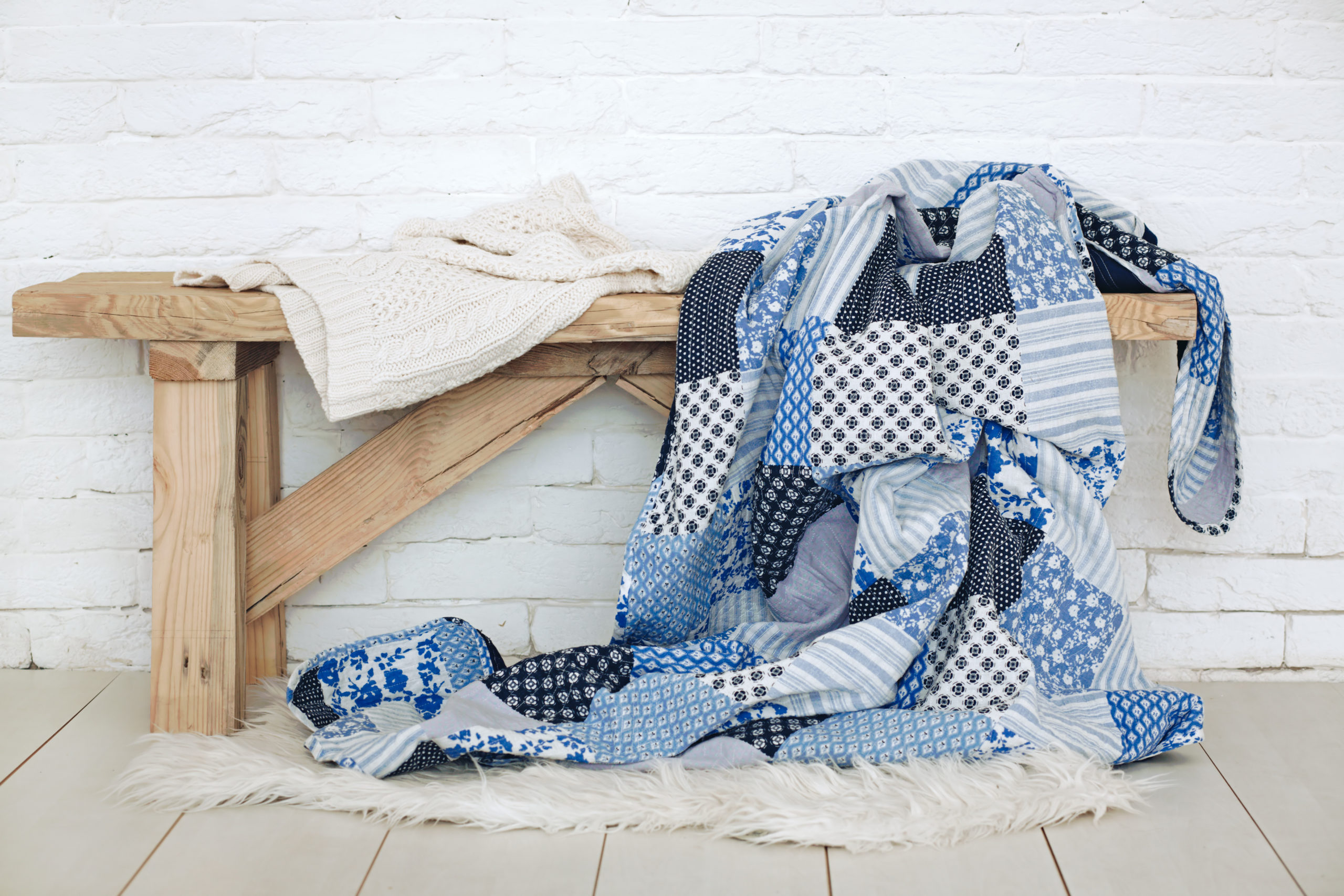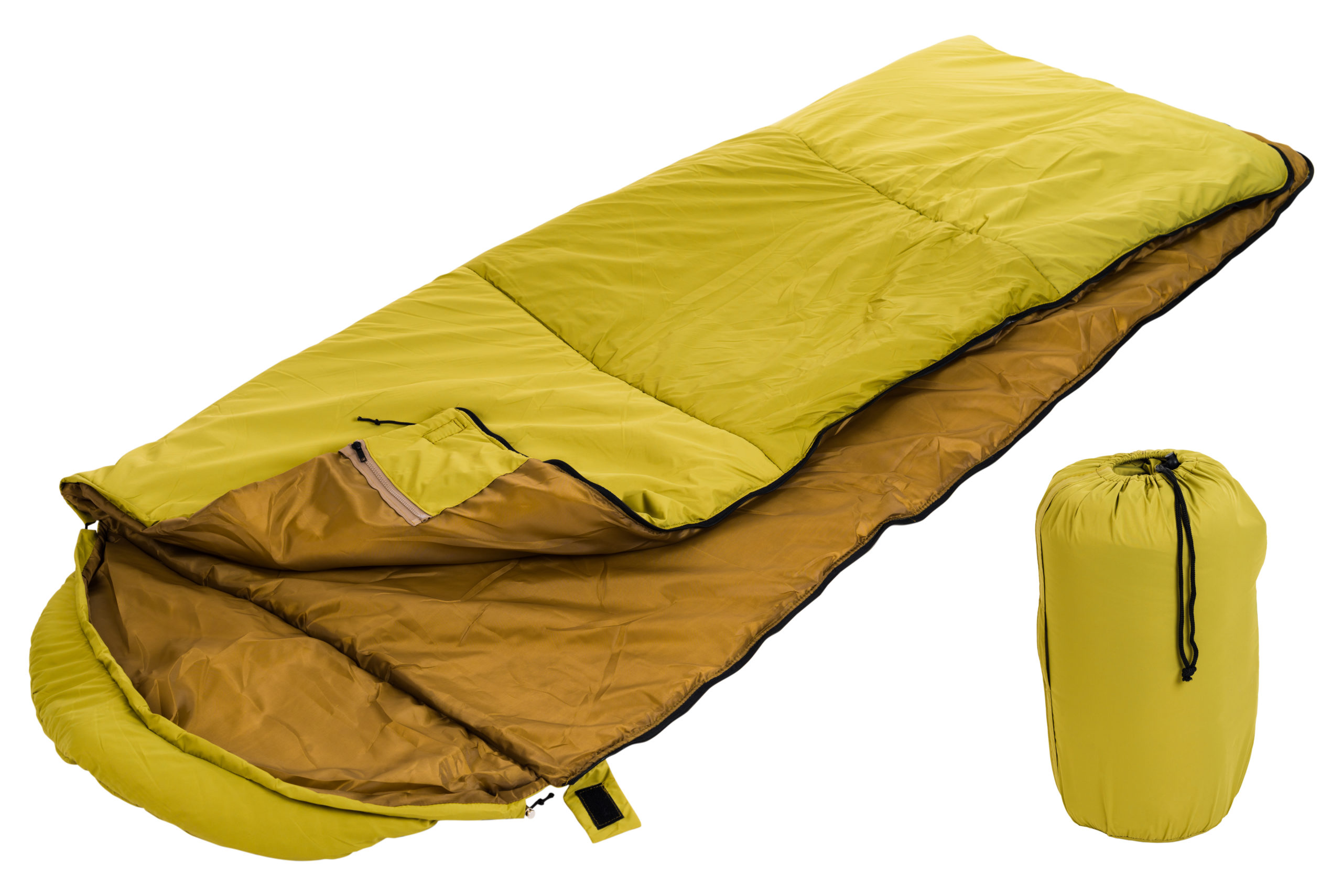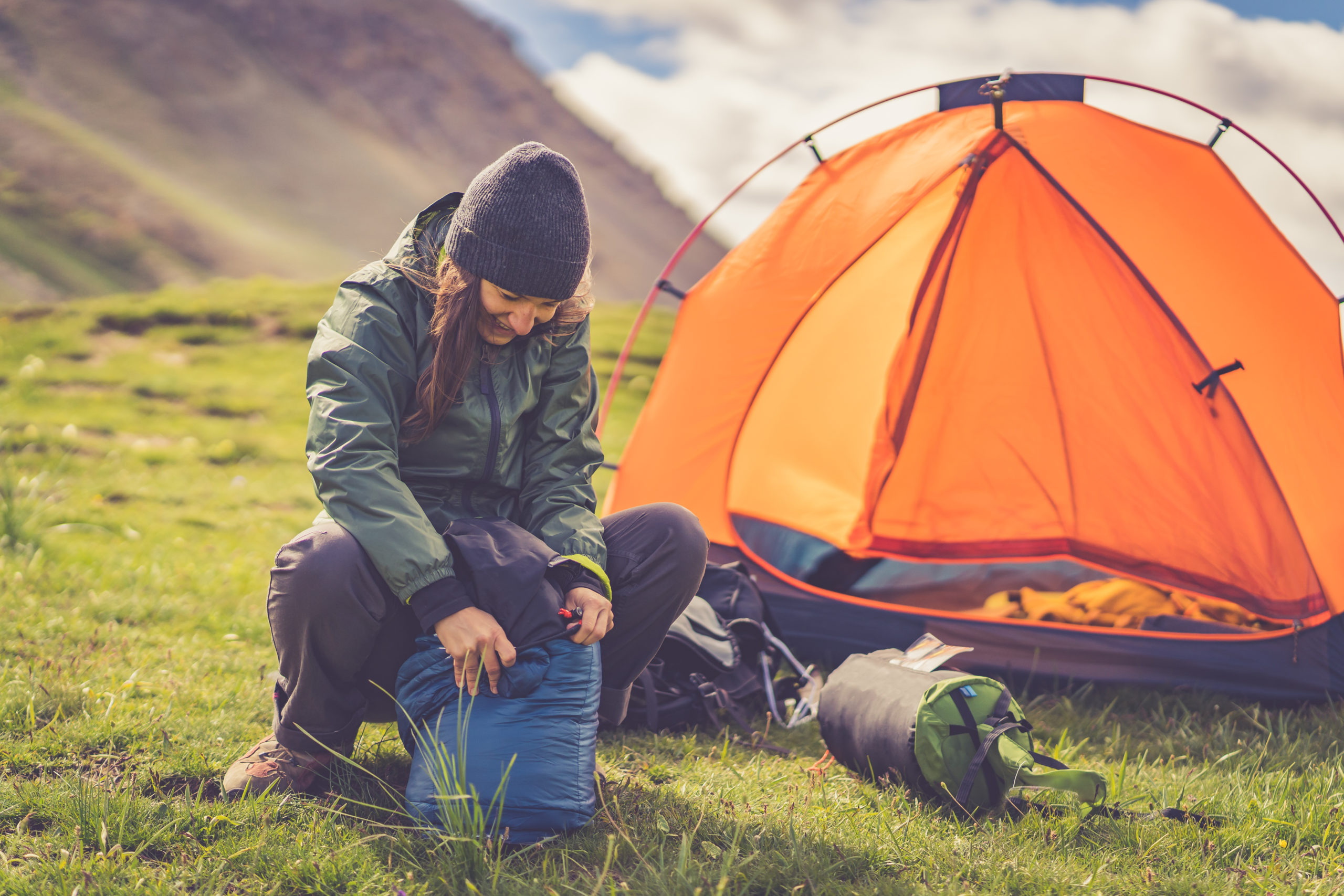For campers, lovers of outdoor activities or anyone who enjoys traveling light and fast, owning a sleeping bag or quilt is a smart decision. They are useful, light, compact and won’t take up much space in or on your camping backpack.
However, choosing between a quilt vs. sleeping bag can be tricky, especially for first-time campers, as both have specific advantages and disadvantages. With all the available options, many people don’t know where to begin.
There are a few factors to consider before making a decision, and we’ll outline all of them in this guide.
What Are Quilts?

A quilt is a layered textile that often has a topside stitched together with smaller pieces of fabric. It can essentially act as a minimalist sleeping bag, and can even be made from the same synthetic insulation materials that a typical sleeping bag is.
However, the most notable difference is that they come in the shape of a duvet, comforter or blanket. Quilts, especially those for camping, are often designed to be lightweight and very compact, making them a convenient choice for travelers on the go.
Unlike an insulated sleeping bag that you need to climb inside of, a backpacking quilt typically only needs to be on top of you, providing insulation to the top and sides of the body.
Quilts do not cover your head, so you may need to wear a head warmer or hat if you’re going to be sleeping in cold environments.
A quilt’s design eliminates the need for a hood and zipper and replaces them with a neck collar or drawstring to prevent heat from escaping. They may also come with a foot box to protect your feet on cold nights.
Since the typical quilt design does not come with an insulated sleeping pad, purchasing one can make you far more comfortable if you’re going to be sleeping on the cold, hard ground.
What Are Sleeping Bags?

A sleeping bag is an insulated portable bed that is suitable for sleeping outdoors. They can also be used indoors as sleepover beds or extra sleeping options during house parties or whenever you have extra people over.
Sleeping bags are also sometimes known as traditional “mummy bags” because they can feature designs that are wide around the shoulder areas and taper down around the feet, like a sarcophagus.
Sleeping bags also tend to have a run-down zipper so that you can easily pop in and out of, as well as a hood to cover the head area.
Unlike quilts, sleeping bags wrap around the entire body, sometimes including the head, in insulated material that helps to retain all your warmth.
There are different sleeping bag designs, ranging from ultra-light sleeping bags, double sleeping bags, women’s sleeping bags and zipless sleeping bags.
Quilt vs Sleeping Bag: Pros and Cons
When it comes to getting a good night’s sleep, nothing is as important as comfort. Either choice between a quilt or a sleeping bag can be a comfortable option for you.
However, due to the similarities and differences in design, function and material, several factors influence the level of comfort a quilt or sleeping bag can provide.
Weight
When looking for a lighter-weight material, quilts should be your go-to option. When compared to sleeping bags, quilts generally weigh around 25% less.
By getting rid of the synthetic or down insulation pad and full-length zippers and hood, a quilt can save you some weight in your pack.
Overall, the type and amount of filling determines the weight of a sleeping bag or quilt. Down filling is typically lighter than synthetic filling and is available in several grades, with the most common ranging between 750 fill to 950 fill.
Bags with more filling obviously tend to be heavier, but also warmer.
Compression and Volume
A quilt can compress easier and into a smaller shape than a sleeping bag because they usually contain less material. They can also be stored in a non-compressed state. A tightly compressed sleeping bag tends to be thicker than a loosely compressed quilt.
Compressing and decompressing will eventually affect the down and synthetic insulation of the sleeping bag or quilt. This can lead to insulation loss after a period of time.
To prevent this from happening, try to leave the sleeping bag or quilt uncompressed when stored.
Warmth

In terms of warmth, sleeping bags tend to be warmer than quilts. Sleeping bags are insulated all around and sometimes come with a head hood to keep your full body warm.
They also seal tightly and prevent the cold from coming in. This maximizes heat retention and supplies the body with maximum warmth.
Modern quilts also have improved designs to increase their warmth level. There are even cold weather quilts with neck and draft collars to keep your head warm and help you sleep better.
The only problem with quilts is the gap between the sleeping pad and the quilt. This gap causes a draft that can lead to heat escape and allow some cold in.
Ease of Use
While neither option is difficult to use, sleeping bags are generally easier to use than quilts. All you have to do is unpack your sleeping bag, roll it out, unzip it and climb in. The zippers also help keep your sleeping bag closed.
If you want to be sure that you’ll stay covered, quilts typically require some time and effort to set up, as they have to be attached to the sleeping pad to stay in place.
The attachment method differs by brand and varies from clips to hooks and snaps. Sleeping pads are also necessary for extra insulation and protection from the ground.
Cost
Quilts are generally more budget-friendly than sleeping bags because they’re made with fewer materials, and they don’t tend to have zippers or hoods. The production process is often shorter and less expensive, which affects the overall cost.
Sleeping bags require more materials. The complex design, quality of the material and type of insulation included all make for an additional cost.
Comfort
For sleepers who move around in their sleep or prioritize sleeping on their sides, quilts tend to be more comfortable because they offer room for more movement. Attaching a custom quilt to a sleeping pad means restless sleepers can find a nice balance.
Several other factors can influence your decision, such as the temperature rating, popular model and versatility of design. Once you consider these factors, choosing the best option for a comfortable and warm sleep should be easy.
Bottom Line
Whenever you choose between a quilt vs. sleeping bag, the final decision will depend on your preference, personal budget and camping style. Each product has unique characteristics that should be considered before purchasing.
Quilts are becoming the go-to option for campers and hikers or outdoorsy people in general, mainly because of their ultra-light design. But, this doesn’t eliminate the need for a sleeping bag, as they are warmer and more convenient for sleepovers and other indoor/outdoor uses.
Depending on your needs and personal preferences, you can always get both and switch between the two.
